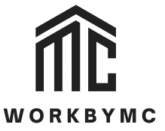Recovering from a motor vehicle accident (MVA) requires a careful balance between rest and movement. Jumping back into normal activities too soon can worsen symptoms, while prolonged inactivity can lead to stiffness and muscle weakness. Mobility training and structured exercises help rebuild strength, improve movement, and prevent complications.
Seeking motor vehicle accident physiotherapy in Edmonton ensures that recovery progresses safely and effectively. By gradually increasing activity levels with the right approach, individuals can regain mobility without causing additional strain. Understanding how to ease back into movement after an MVA is essential for long-term recovery.
Why Gradual Activity Progression Matters After an MVA
Following an MVA, the body may experience pain, stiffness, and limited range of motion. Overexertion can delay healing while avoiding movement altogether can lead to further mobility restrictions. A structured plan that includes mobility workouts and controlled movement helps prevent:
- Increased muscle tension and joint stiffness.
- Delayed healing due to excessive physical stress.
- Secondary injuries from poor movement patterns.
Physiotherapists recommend progressing activity levels step by step to prevent setbacks while improving overall function.
Steps to Safely Increase Activity After an MVA
Recovering from a motor vehicle accident (MVA) requires a structured approach to rebuilding strength and mobility. Increasing activity levels too quickly can lead to setbacks, while inactivity may cause stiffness and muscle weakness. A balance between mobility training, strength-building, and proper recovery helps prevent further injury. Seeking motor vehicle accident physiotherapy in Edmonton ensures a steady and controlled transition back to daily activities.
1. Start with Gentle Mobility Workouts
Early movement after an MVA focuses on restoring joint mobility and reducing stiffness. Mobility workouts improve circulation, relieve tension, and help prevent long-term movement restrictions.
How to Perform:
- Neck Rotations: Sit upright and slowly turn your head from side to side, holding each position for a few seconds. Repeat 10 times.
- Shoulder Rolls: Perform forward shoulder rolls using slow, circular movements 10 times, then repeat backward.
- Ankle Pumps: While sitting, extend your legs and move your feet up and down to improve circulation and flexibility.
2. Use Low-Impact Exercises to Rebuild Strength
Once mobility training improves flexibility, low-impact exercises help rebuild endurance and strength without overstressing healing tissues.
How to Perform:
- Walking: Begin with short 5-10 minute walks at a slow pace, gradually increasing duration as comfort allows.
- Pool Therapy: Stand in waist-deep water and perform slow leg lifts or arm circles for resistance training without joint strain.
- Seated Leg Lifts: Position yourself in a chair with both feet on the ground. Gradually lift one leg straight out, hold for a few seconds, then lower. Repeat 10 times per leg.
3. Strengthen Muscles with Targeted Mobility Training
Strength training prevents future injuries by reinforcing joint stability and improving body mechanics.
How to Perform:
- Glute Bridges: Recline on your back with your knees bent and feet flat. Elevate your hips, squeezing your glutes at the highest point. Lower slowly and repeat 10 times.
- Wall Squats: Stand against a wall and lower into a squat position, holding for 10-15 seconds. Return to standing and repeat 10 times.
- Resistance Band Shoulder Rows: Hold a resistance band with both hands, pulling towards your chest while keeping your elbows close to your body. Repeat 10 times.
4. Manual Therapy for Improved Recovery
Manual therapy techniques are used in car accident physiotherapy to reduce pain and restore movement.
Common Manual Therapy Techniques:
- Myofascial Release Therapy: Relieves tension in muscles and fascia to improve flexibility.
- Joint Mobilization Therapy: Increases joint range of motion through controlled passive movements.
- Soft Tissue Mobilization: Breaks down adhesions in muscles and enhances circulation.
5. Modalities to Support Healing and Recovery
Physiotherapy modalities help reduce inflammation and promote faster healing.
Common Modalities Used in MVA Physiotherapy:
- Shockwave Therapy: Utilizes sound waves to break down scar tissue and improve mobility.
- TENS Therapy (Transcutaneous Electrical Nerve Stimulation): Sends mild electrical pulses to reduce pain and muscle tightness.
- Ultrasound Therapy: Increases blood flow and tissue repair with deep soundwave penetration.
6. Improve Posture with Postural Training
Car accidents often cause postural imbalances, leading to pain and restricted movement. Postural training ensures proper body alignment and reduces strain.
How to Perform:
- Pelvic Tilt Training: Lie on your back with your knees bent, tighten your core, and flatten your lower back against the floor. Hold for 10 seconds and repeat.
- Neutral Spine Awareness: Sit or stand with shoulders aligned over the hips and maintain a straight spine. Hold the position for 30 seconds.
7. Restore Walking Patterns with Gait Training
Many individuals develop improper walking patterns after an MVA due to pain or muscle weakness. Gait training restores natural movement and prevents further strain.
How to Perform:
- Heel-to-Toe Walking: Walk in a straight line, placing one foot directly in front of the other.
- Weight Shift Exercises: Stand with feet shoulder-width apart and gently shift weight from one leg to the other to regain balance control.
- Step-Ups: Step onto a low platform with one foot, then bring the other up. Step down slowly and repeat.
Moving Forward with Safe Activity Progression
Recovering from an MVA requires patience and a structured approach to movement. Gradual increases in activity help rebuild strength and flexibility without overloading the body. Incorporating mobility workouts and controlled exercises ensures steady progress while preventing setbacks. Seeking motor vehicle accident physiotherapy in Edmonton provides personalized guidance for safe recovery.
Granville Physiotherapy offers tailored programs to help individuals regain mobility, minimize pain, and return to daily activities with confidence. Searching for a physiotherapist near me can be the first step toward a full and lasting recovery.

